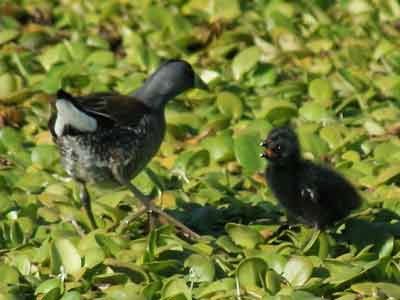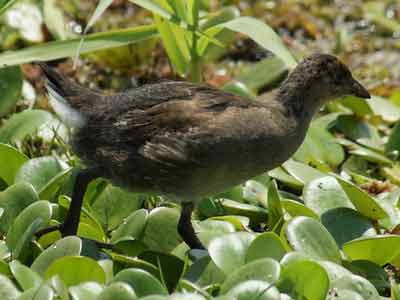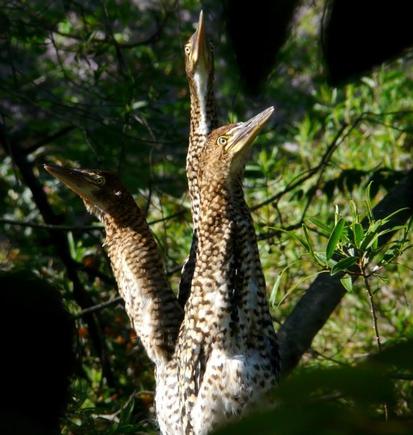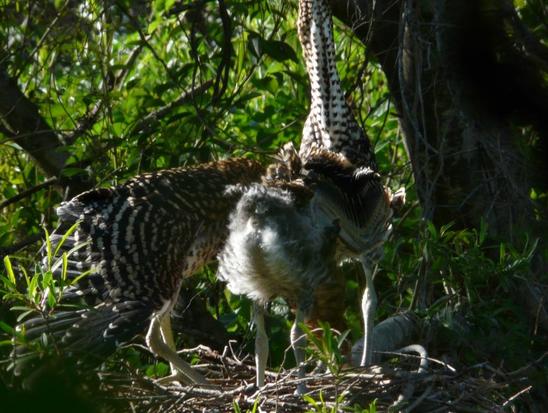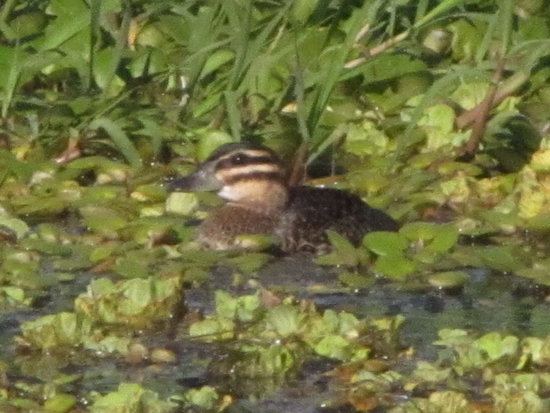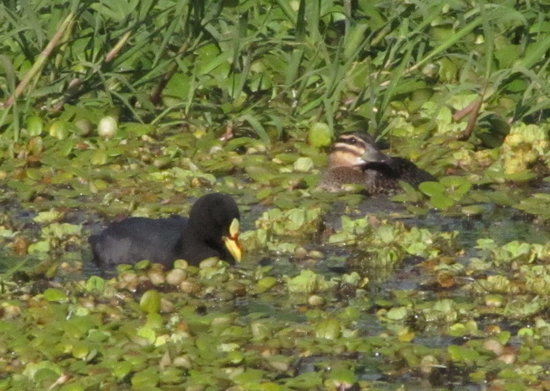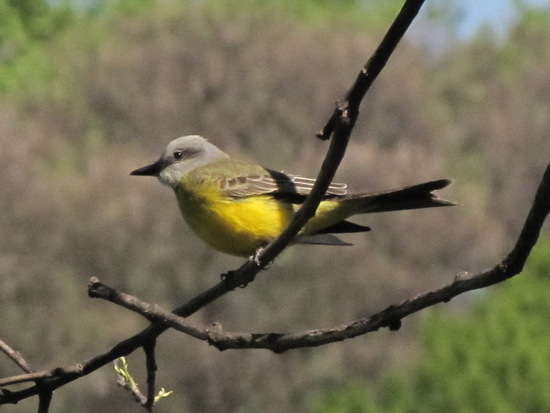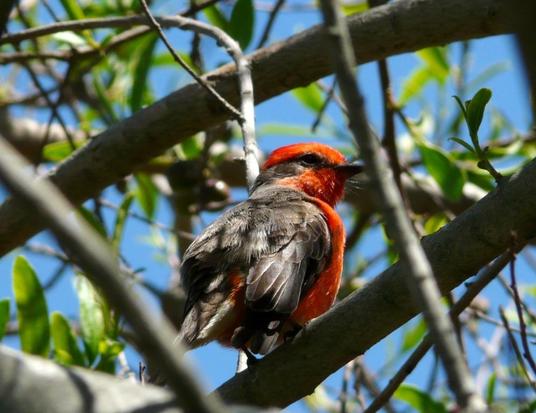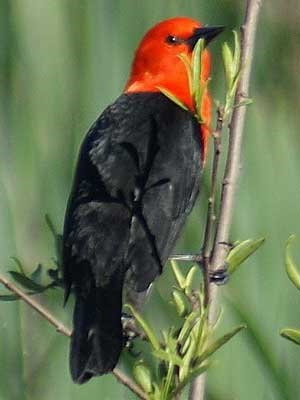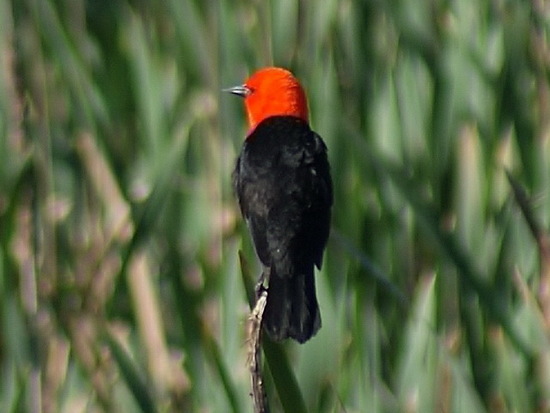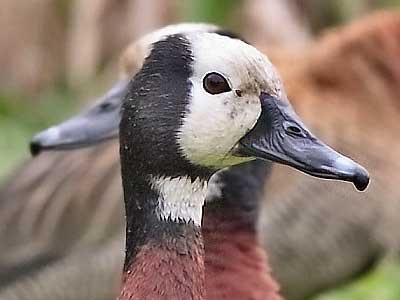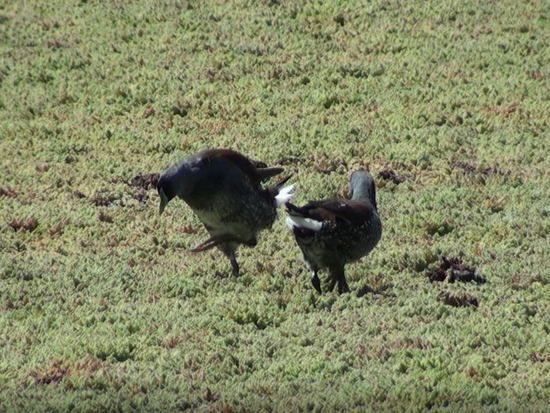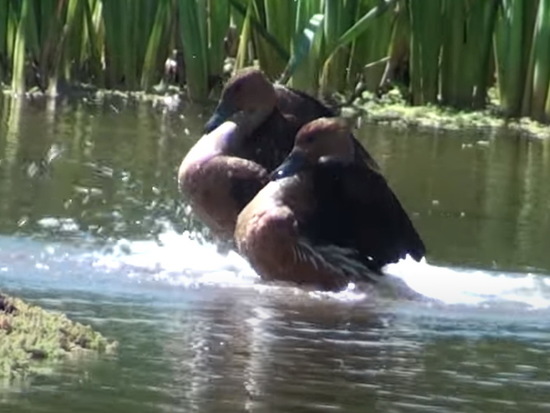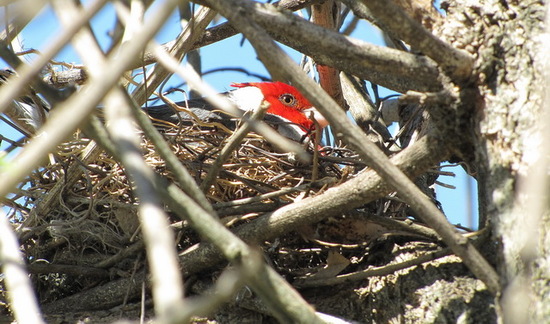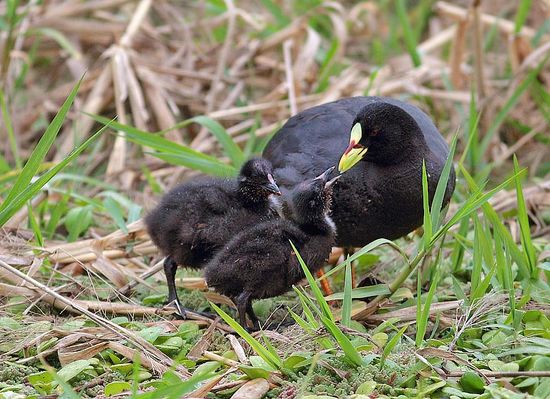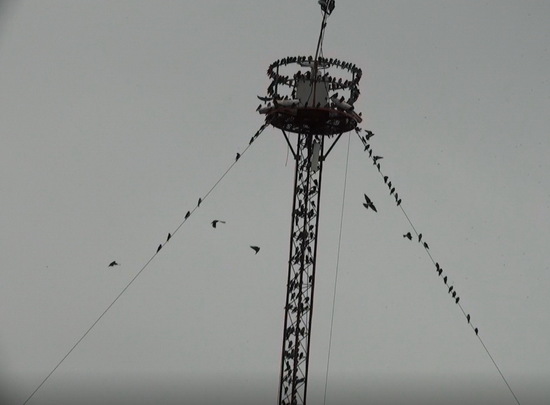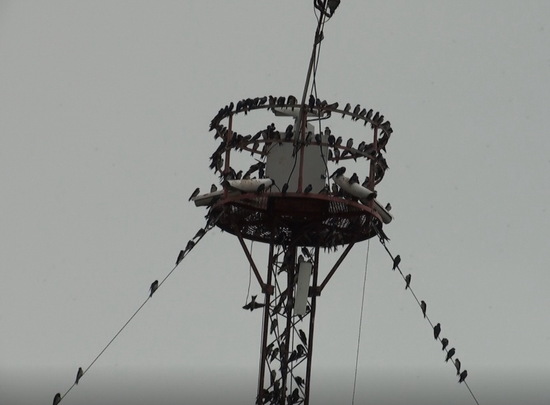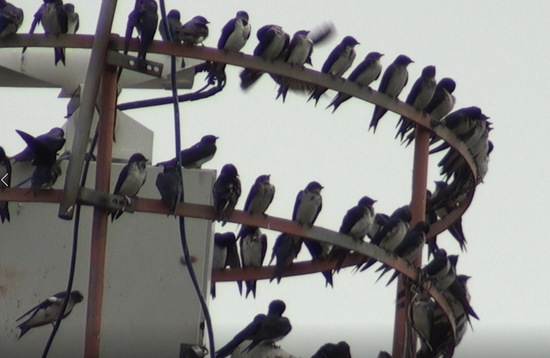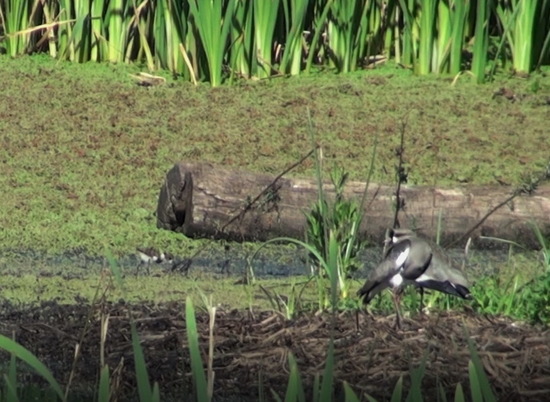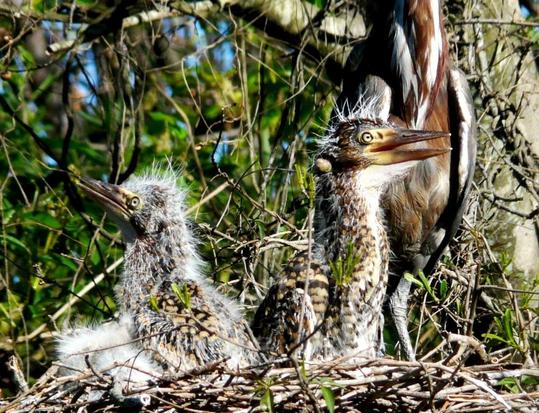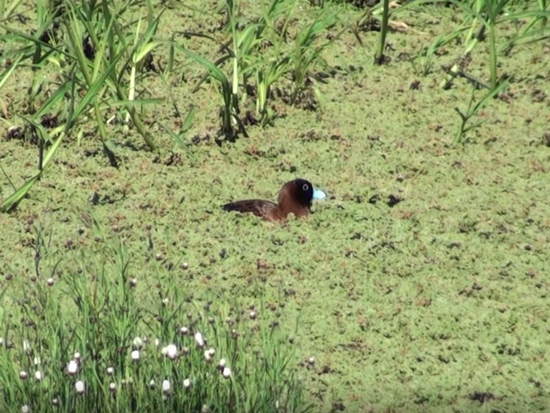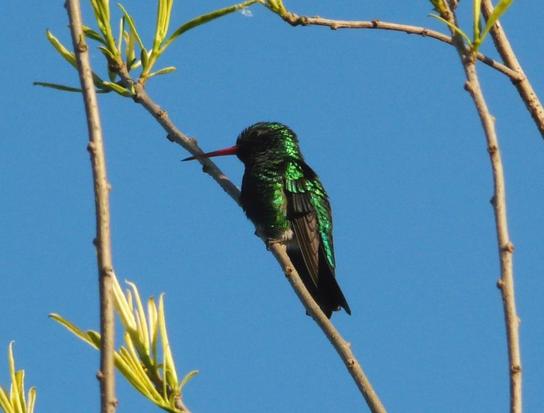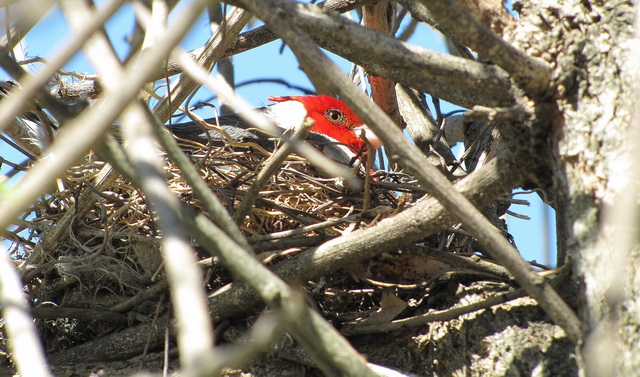News - October 2010
Courtship and mating
Courtship display: The female stimulates the male showing receptiveness. With the back arched, the rigid wings a bit raised as if touching the tips at the back and the head lowered. The male perceives the female´s disposition and follows her. They engage in a merry-go-round movement and after three turns the female stops to be mounted. The female does not dip the head into the water. As the action is finished the female goes away with a wing shuffling. The male makes a bow display arching his body and lowering the head.
The scene had already and it was not possible to document the existence of courtship displays prior to mating. During mating the female remains under water and the male holds her by the head. After copulation both celebrate with a short but vigorous water treading as they rise parallel sticking their chests out and keeping their half-folded wings raised.
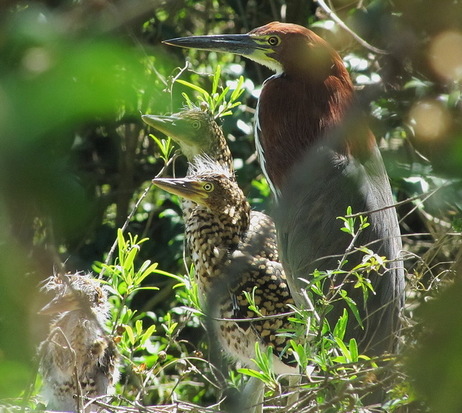
Three chicks in three different sizes. This is because Tiger-Herons, unlike most bird species, begin to incubate immediately after the egg is laid. Since the eggs take the same number of days to develop they hatch staggeredly. This is known as asynchronous hatching and accounts for the difference in size.


